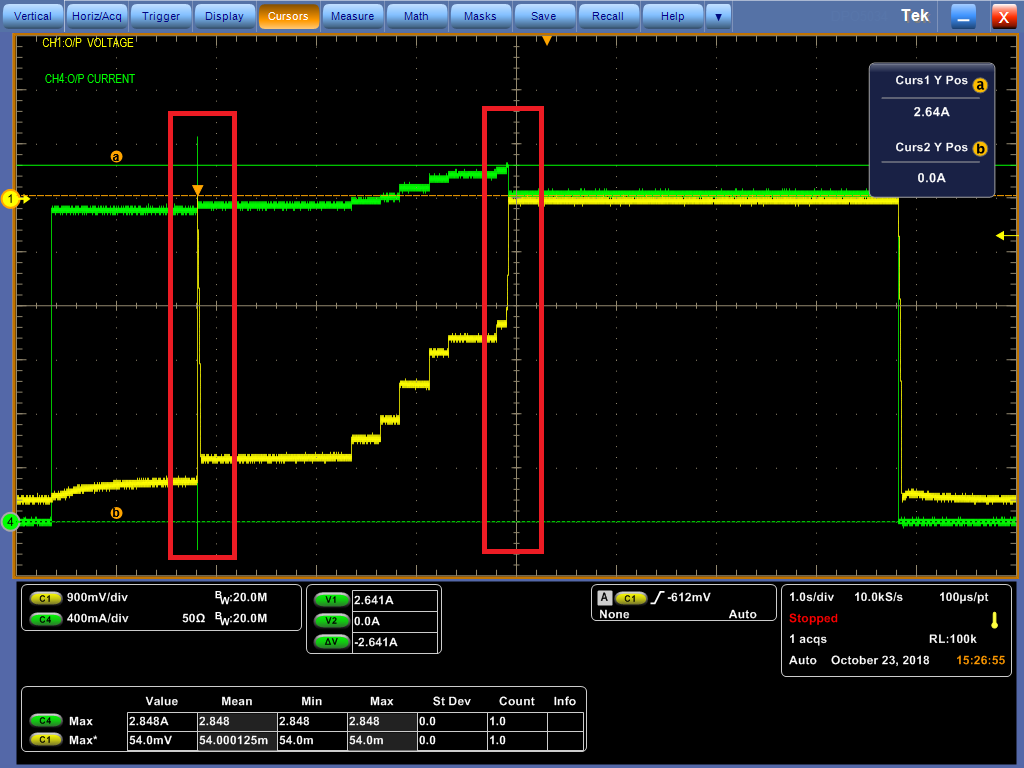Hi Team,
Could you please comment if the OCP operation is what we expected and explain the current limit behaviors according to below waveform step by step? Thanks!
The design is +12V to -5V/1A. The OCP test was done by e-load. The first OCP was triggered while the output current increased to 2.3A, then the device kept switching till the output current up to 2.6A.
Ch1: Output Voltage; Ch4: Output Current
Best regards,
Sam Ting



